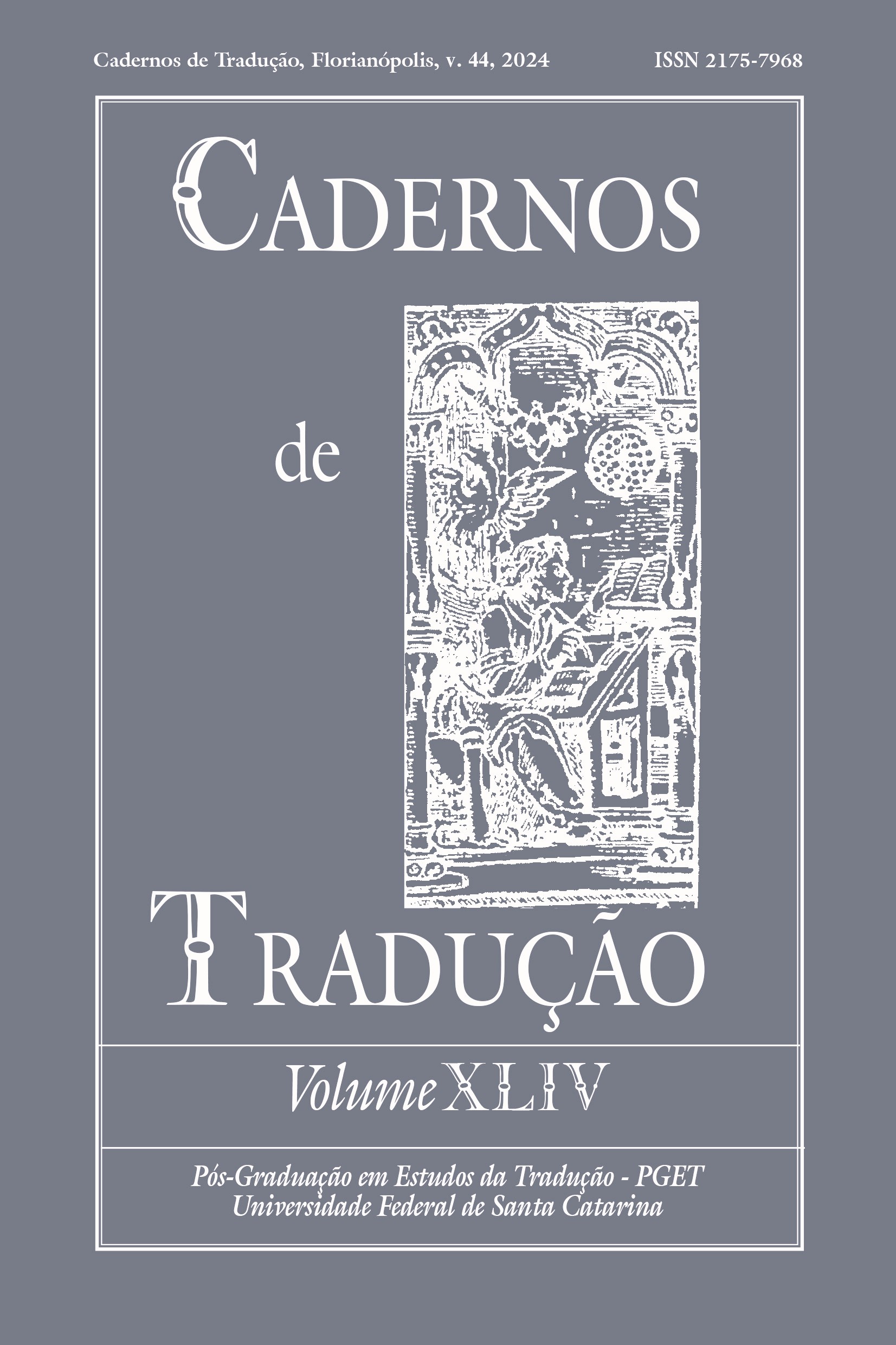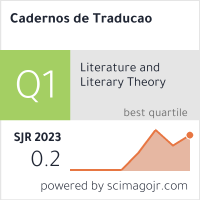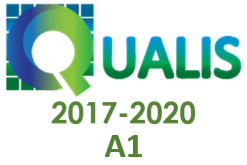Towards a tool for the integrated management of the interpreter’s prior preparation: A pilot study
DOI:
https://doi.org/10.5007/2175-7968.2024.e95229Palavras-chave:
glossary, prior preparation, terminological application, linguistic knowledge, extralinguistic knowledgeResumo
The interpreter’s prior preparation for a specialised assignment poses a constant challenge for professionals given the usual time constraints experienced in interpreting. The use of an integral application that optimises the prior preparation process from a dual linguistic and extralinguistic perspective will allow the interpreter to contextualise the topic of the event in an agile and effective manner. In order to define the basis on which this application should be designed, this study, which is part of a larger one focused on analysing the way in which prior preparation and glossary elaboration are approached at different educational and professional levels, aims to respond to three objectives: identifying the nature of the main drawbacks encountered by interpreters when preparing for an assignment; identifying the factors that interpreters recognise as determining in increasing the degree of their preparation; and, finally, identifying the interpreters’ future prospects in terms of prior preparation. To this end, a questionnaire was developed aimed at working professional interpreters, to which 41 subjects have responded so far. The preliminary data collected will allow us to initially define the guidelines that will mark the development of the application that aims to combine the linguistic and extralinguistic knowledge acquired by the interpreter for each new assignment in order to guarantee the most effective contextualisation of the speaker’s words and, consequently, achieve the greatest degree of success.
Referências
Álvarez-Pérez, B., & Pérez-Luzardo Díaz, J. (2022). Interpreter preparation in the interpreting classroom environment: A study on the usefulness of terminological glossaries. The Interpreters’ Newsletter, 27, 129–146. https://doi.org/10.13137/2421-714X/34395
Cabré Castellví, M. T. (2000). Terminología y documentación: Presupuestos teóricos. In C. Gonzalo García & V. García Yebra (Eds.), Documentación, terminología y traducción (pp. 31–44). Editorial Síntesis – Fundación Duques de Soria.
Chernov, G. V. (2004). Inference and Anticipation in Simultaneous Interpreting: A Probability-Prediction Model. John Benjamins Publishing Company.
Chmiel, A. (2021). Effects of simultaneous interpreting experience and training on anticipation, as measured by word-translation latencies. Interpreting, 23(1), 18–44. https://doi.org/10.1075/intp.00048.chm
Corpas Pastor, G. (2021). Technology solutions for interpreters: the VIP system. Hermēneus: Revista de traducción e interpretación, (23), 93–123. https://doi.org/10.24197/her.23.2021.91-123
Defrancq, B., & Fantinuoli, C. (2021). Automatic speech recognition in the booth: Assessment of system performance, interpreters’ performances and interactions in the context of numbers. Target, 33(1), 73–102. https://doi.org/10.1075/target.19166.def
Díaz-Galaz, S., Padilla, P., & Bajo, M. T. (2015). The role of advance preparation in simultaneous interpreting: a comparison of professional interpreters and interpreting students. Interpreting, 17(1), 1–25. https://doi.org/10.1075/intp.17.1.01dia
Faber, P. (2010, May 19–21). Knowledge Acquisition: A Key Competence in Translation [Conference session]. IX Leipzig International Conference on Translation & Interpretation Studies, Leipzig, Germany.
Faber, P., & León-Araúz, P. (2016). Specialized Knowledge Representation and the Parameterization of Context. Frontiers in Psychology, 7, 196. https://doi.org/10.3389/fpsyg.2016.00196
Fantinuoli, C. (2009). InterpretBank: Ein Tool zum Wissens- und Terminologiemanagement für Simultandolmet / Design and implementation of a terminology and knowledge management software for conference interpreters. [Doctoral dissertation]. Universität Mainz/Germersheim.
Fantinuoli, C. (2017). Computer-assisted preparation in conference interpreting. Translation and Interpreting, 9(2), 24–37. https://doi.org/10.12807/ti.109202.2017.a02
Fantinuoli, C. (2018). Interpreting and Technology. Language Science Press.
Fantinuoli, C., Marchesini, G., Landan, D., & Horak, L. (2022). KUDO Interpreter Assist: Automated Real-time Support for Remote Interpretation. ArXiv.
Fantinuoli, C., & Montecchio, M. (2023). Defining maximum acceptable latency of AI-enhanced CAI tools. ArXiv.
Frittella, F. M. (2022). CAI Tool-Supported SI of Numbers: A Theoretical and Methodological Contribution. International Journal of Interpreter Education, 14(1), 32–56. https://doi.org/10.34068/ijie.14.01.05
Gallego, D., & Tolosa, M. (2012). Terminología bilingüe y documentación “ad hoc” para intérpretes de conferencias: Una aproximación metodológica basada en corpus. Estudios de Traducción, 2, 33–46. https://doi.org/10.5209/rev_ESTR.2012.v2.38976
García de Quesada, M., & Montero Martínez, S. (2003). Documentación y adquisición terminográficas basadas en el conocimiento: El caso de la interpretación. Hermēneus: Revista de traducción e interpretación, (5), 107–130.
Gile, D. (2009). Basic Concepts and Models for Interpreter and Translator Training. Rev. ed. John Benjamins Publishing Company.
Gillies, A. (2013). Conference interpreting: a student’s practice book. Routledge.
International Association of Conference Interpreters. (1999/2016). Practical guide for professional conference interpreters. AIIC.
Jiang, H. (2013). The interpreter’s glossary in simultaneous interpreting. Interpreting, 15(1), 74–93. https://doi.org/10.1075/intp.15.1.04jia
Lederer, M. (2003). The Interpretive Model. Routledge.
Luccarelli, L. (2006). Conference preparation: What it is and how it could be taught. Conference Interpretation and Translation, 8(1), 3–26.
Manole, V. (2019). General knowledge in conference interpreting training: a survival guide for overwhelmed students. Revue Internationale d’Études en Langes Modernes Appliquées / International Review of studies in applied Modern Languages, (12), 65–80.
Ortego Antón, M. T. (2016). La gestión de la terminología en interpretación social a través de dispositivos móviles. Revista Tradumàtica: tecnologies de la traducción, (14), 49–57. https://doi.org/10.5565/rev/tradumatica.166
Pérez-Luzardo Díaz, J. (2005). Didáctica de la interpretación simultánea. [Doctoral dissertation]. Universidad de Las Palmas de Gran Canaria.
Pérez-Luzardo Díaz, J. (2009). Los conocimientos: su incidencia durante el proceso de interpretación simultánea. In S. Bravo Utrera & R. García López (Eds.), Estudios de traducción: perspectivas / Zinaida Lvóvskaya in memoriam (pp. 50–70). Peter Lang.
Prandi, B. (2020). The use of CAI tools in interpreting training: where are we now going and where do we go from here? Special ed. InTRAlinea.
Recoder Sellarés, M. J., & Cid Leal, P. (2004). La documentación en la traducción especializada. In C. Gonzalo García & V. García Yebra (Eds.), Manual de documentación y terminología para la traducción especializada (pp. 73–88). Arco Libros.
Sales Salvador, D. (2006). Documentación aplicada a la traducción: presente y futuro de una disciplina. Trea.
Sales Salvador, D. (2022). Threading metaliteracy into Translation and Interpreting undergraduates’ information literacy training: a reflective active learning approach. Anales de Documentación, 25. https://doi.org/10.6018/analesdoc.504691
Seleskovitch, D. (2010). Interpreting for international conferences: problems of language and communication. 3rd ed. Pen and Booth.
Setton, R., & Dawrant, A. (2016). Conference Interpreting: A Complete Course and Trainer’s Guide. John Benjamins Publishing Company.
Downloads
Publicado
Como Citar
Edição
Seção
Licença
Copyright (c) 2024 Cadernos de Tradução

Este trabalho está licenciado sob uma licença Creative Commons Attribution 4.0 International License.
Autores mantêm os direitos autorais e concedem à revista o direito de primeira publicação, com o trabalho simultaneamente licenciado sob a Licença Creative Commons Atribuição 4.0 Internacional (CC BY) que permite o compartilhamento do trabalho com reconhecimento da autoria e publicação inicial nesta revista.
Autores têm autorização para assumir contratos adicionais separadamente, para distribuição não exclusiva da versão do trabalho publicada nesta revista (ex.: publicar em repositório institucional ou como capítulo de livro, com reconhecimento de autoria e publicação inicial nesta revista).










































